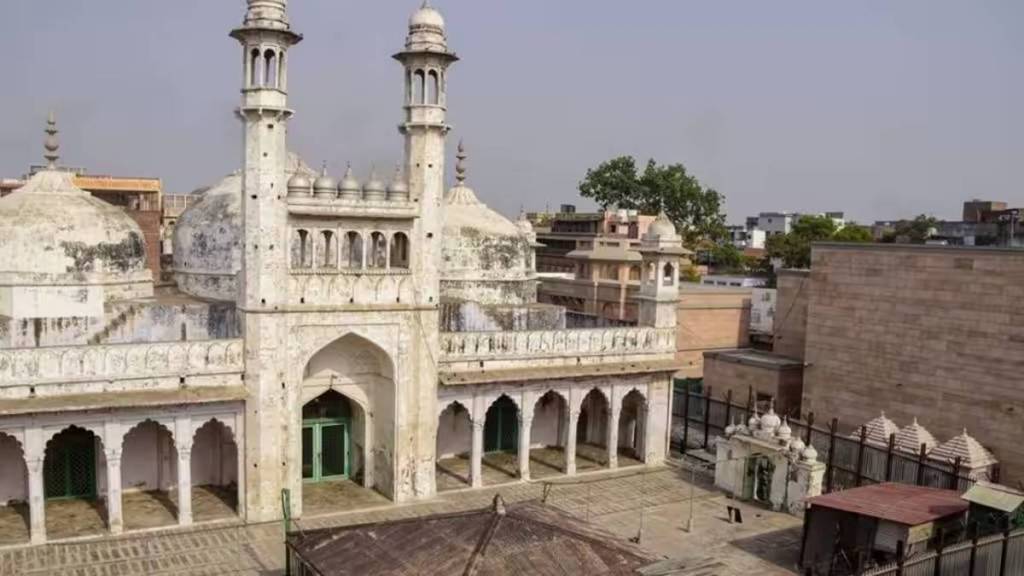A large Hindu temple existed at the site of the Gyanvapi mosque prior to the construction of the existing structure, the Archaeological Survey of India has found in its court-ordered survey of the Gyanvapi complex in Varanasi district of Uttar Pradesh, the Hindu side said on Thursday quoting the ASI report after it was made public.
Advocate Vishnu Shankar Jain, representing the Hindu side addressed a press conference after both sides in the Gyanvapi dispute were handed certified copies of the ASI survey report after the court rejected the Muslim side’s plea against the report being made public. Both the Hindu as well as Muslim sides had applied for copies of the ASI survey report of the Gyanvapi mosque complex adjoining the Kashi Vishwanath temple.
“It can be said that there existed a large Hindu Temple prior to the construction of the existing structure,” Jain said, quoting from the conclusions of the ASI report.
Quoting from the report further, Jain said that the ASI has found that the pillars and plasters used in the existing structure were studied systematically and scientifically for the enlargement of the mosque and construction of Sahan. “Parts of pre-existing temples, including pillars and plasters, were reused with little modifications. A minute study of pillars and plasters in corridors suggests that they were originally part of a pre-existing Hindu temple for their reuse in the existing structure, Vyala figures carved on either side of the lotus medallion were mutilated and after removing the stone mass from the corners, that space was decorated with floral design. This observed patient is supported by two similar plasters still existing on the north and southern walls of the western chamber in their original place,” Jain said, reading from the ASI’s findings.
The Hindu side further claimed that the ASI found a number of inscriptions on the existing and pre-existing structure during the survey. “A total of 34 inscriptions were recorded during the present survey and 32 stamped pages were taken. These are in fact inscriptions on the stone of a preexisting Hindu temple which have been reused during the construction, repair of the existing structure,” he said, quoting the report.
The report says that inscriptions include those in the Devanagari, Grantha, Telugu and Kannada scripts. “The reuse of earlier inscriptions in the structure suggests that the earlier structures were destroyed and their parts were reused in the construction repair of the existing structure. Three names of deities such as Janardana, Rudra and Umeshwara are found in these inscriptions,” the report has found, according to Jain.
Jain said that according to the ASI report, terms such as “Maha Mukti Mandap” in three inscriptions are of great significance.
The survey was carried out by the ASI at the Gyanvapi Mosque complex in Varanasi following an order by the Varanasi district judge on July 21, 2023. The scientific survey was carried out to determine whether the existing mosque was constructed over a pre-existing structure of a Hindu temple.
The Varanasi court’s order was challenged in the Allahabad High Court through a petition filed by the Anjuman Intezamia Masjid Committee, the body that manages the Gyanvapi Mosque, but was rejected on August 3. The Muslim side then challenged the HC’s order in the Supreme Court which also refused to order a stay on the ASI survey on August 4, 2023.
The top court, however, restrained the ASI from surveying the ‘wuzukhana’ area where the Hindu side claimed a ‘Shivling’ was found last year. The court also took an undertaking from the ASI stating that no excavation would be carried out at the site and that no damage would be caused to the structure before allowing the survey.

